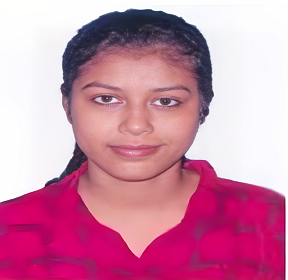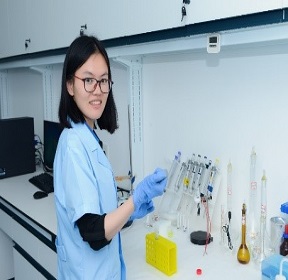Speakers

Asst Prof Dr Dileep Kumar Manghwani
Sindh Agriculture University, Tando Jam, Sindh, Pakistan PakistanTitle: Development and quality characteristics of fruit based whey beverage
Abstract:
The artificial flavor drink cause harmful effects on human health by increasing the ratio of diabetic patients in fast growing world population The separation of milk fat and casein from the whole milk with the discarded of liquid in the form of whey is a huge economical loss for the dairy industries to overcome this solution. Utilization of that whey in fruit-based beverages are better option to replace the unhealthy and health conscious flavor drinks from consumer market. The aim of this study for the development of fruit-based whey beverage and evaluate its sensorial and physiochemical characteristics of FBWB. The fruit-based whey beverages was prepared by blending with orange apple juice (OAJ) with different ratios of whey 10:10:80, 15:15:70, 20:20:60 and 100:00 mL whey as a control. The result showed that sensory characteristics such as, color, flavor, taste, appearance and overall acceptability consistently improved compared to (control). It was further noticed that 20:20:60 (OAJ -W) beverage was highly acceptable by the sensory panel of judges. For the physiochemical characteristics indicated that Brixo, pH, acidity, Vitamin-C, total sugar, reducing sugar, moisture, protein and ash content appreciably improve. In conclusion, the result mightily suggest that the addition of orange apple juice enhance the sensorial and nutritional quality of FBWB and justify the consumer demand to reduce the overuse of unhealthy and artificial flavored drinks compared to healthy fruit based beverages.
Keywords: whey, apple orange juice, overall acceptability, vitamin-C
Biography:
Name: Dr Dileep Kumar Manghwani
Email id: dklifst.sau@gmail.com
Affiliation: Institute of Food Sciences and Technology
Country: Pakistan
University: Sindh Agriculture University, Tando Jam, Sindh, Pakistan

Natisha Dukhi
South AfricanTitle: Factors associated with adolescent obesity in South Africa: empirical insights from a machine learning approach
Biography:
Dr Natisha Dukhi is a Senior Research Specialist at the Human Sciences Research Council, South Africa. She has spent over a decade working as a Medical Scientist, specializing in Human Anatomy, Physiology, Pathophysiology and Nutrition at various universities in SA. Since 2009, she has been involved with community health and NGOs, and served as an online mentor for the Triune Uganda 2009 Global Project for Pharmacy and Social Science students from countries in Africa, America, Europe and Asia. In 2016, she graduated with a PhD in Public Health at the University of KwaZulu-Natal. She is an eclectic behavioral scientist, with various interdisciplinary research focuses. Her areas of expertise include Nutrition, Adolescent and Child Health, health promotion and non-communicable diseases, with special interest in mHealth, Artificial Intelligence, and gender-based violence. Her scientific experience and collaborations have led to various interdisciplinary publications, book chapters and conference proceedings. She is a reviewer for various national and international journals. She is a South African Young Academy of Science member, African Academy of Sciences (AAS) Affiliate, exco for Public Health Association of South Africa (PHASA) and OWSD SA National Chapter, Fellow and President of African ChangeMakers South Africa, Fellow of the Southern Africa and Africa Science Leadership Programmes, among others. In 2018, she was a BRICS Young Scientist awardee, and a recipient of the Gro Brundtland Award for outstanding work in the field of public health and development.

Mahwish Aslam
United KingdomTitle: EFFECT OF ZINC SUPPLEMENTATION ON BLOOD GLUCOSE LEVEL IN DIFFERENT AGE GROUPS OF DIABETES TYPE 2
Abstract:
Studies on humans have revealed the beneficial effects of zinc (Zn) supplementation in patients with type-2 diabetes. Aim: The present study was designed to investigate the effects of zinc supplementation on blood glucose level in type-2 diabetic patients and determine the interaction between age and zinc supplementation on type-2 diabetic patients. Methods: A randomized placebo-control trial conducted in Bashir Hospital of Sialkot, Allama Iqbal Memorial Hospital Sialkot and Civil Hospital of Daska, Sialkot. 144 diabetic patients were selected including an expected drop-out rate of 20%. All the participants were randomly divided into Group 1 (Treatment group with intervention given Zn tablets 20 mg/day) and Group 2 (control group with placebo effect). Each group was further divided into 2 age categories Category 1 (30-50 years of age) and Category 2 (51-70 Years of age). Demographic data, Anthropometric measurements, 24-h dietary recall, serum blood glucose analysis, HbA1C, and serum zinc levels were recorded at the beginning (0 day) and end of the study (60 days). Results: Final fasting serum glucose levels were significantly lowered in group 1 with (p < 0.05) as compared to group 2, but interestingly, results were significant (p < 0.05) in the older age group (51-70 years) as compared to their younger age counterparts (30-50 years) of group2. A similar trend was also found in the HbA1c, serum Zn levels and BMI of the participants. Conclusion: Results implied the possible phenomenon of better response to Zn supplementation among aged patients as compared to younger counterparts, which may suggest higher Zn demands with advanced age.
Biography:
Ms. Mahwish Aslam had worked as Senior Lecturer in The University of Lahore (UOL), and she also worked as a Consultant Dietitian in the department of UIDNS. She has published more than 8 papers in a well reputed journals and working on many projects.

Preeti
IndiaTitle: Pulsed electric field treated milk improves the quality of curd
Abstract:
Pulsed electric field (PEF) is a potential pre-treatment technique to improve quality of milk by reducing its microbial load. However, since significant volumes of milk is processed by the dairy industry to dairy products, there is a need to evaluate the quality and acceptability of such products prepared using PEF treated milk. The present study aims at addressing this issue with respect to a popular fermented dairy product. The
Biography:
I am currently working in the area of non-thermal food preservation, fermented beverages, food packaging, and technology of millet-based beer. Advising several master scholars, participated in several national and international conferences and seminars, delivered lectures as Resource Person, Keynote speaker, in national, international conferences, and training programs, completed AUTOCAD 2D & 3D certification, received the Outstanding Scientist Award in the 7th International Scientist Awards on Engineering, Science, and Medicine, Women Scientist Award” by the Society of Agriculture Research and Social Development. Sponsorship to attend World Congress on Food Technology and Nutrition, 2022, Sponsorship and speaker at “International webinar on Nutrition and Healthcare” during November 24-25, 2022 in Paris, France, training of 21, 7 and 5 days. I have more than 125 publications including, 18 papers, 8 international CRC-Taylor and Francis edited books, 11 book chapters, about 30 popular articles, and 5 conference papers and 57 abstracts, 2 editorial opinions to her credit. Serving as an external examiner for various, Indian state agricultural universities. I am also serving as editor and reviewer of several journals national and international journals. I have reviewed more than 50 manuscripts.

Roseline Edide Archibong
United KingdomTitle: Food quality assessment of processed Telfairia occidentalis (Ikong Ubong) leaves
Abstract:
The ready-to-eat (RTE) fruit and vegetable industry is a worldwide expanding sector. From 2000 to 2017, vegetables’ global production has increased by approximately 60%. Consumption of RTE vegetable salads has also increased within developing countries owing to a change in lifestyle patterns and growth of awareness regarding the positive relationship between human health and intake of RTE vegetables. Telfairia occidentalis otherwise called fluted pumpkin, fluted gourd or Ikong Ubong is a versatile tropical leafy vegetable in West Africa that belongs to the Cucurbitaceae family. Although edible plants such as T. occidentialis have many beneficial uses they have been associated with high levels of hygiene indicators such as Aerobic bacteria (aerobic colony count: ACC) and certain microbial pathogens due to poor post-harvest handling.
Biography:
Roseline is a passionate, experienced, and self-motivated Food scientist and Educationist with a successful track record in training, teaching, researching, developing and improving quality products for health-conscious companies. She has been successful in training and managing various projects and expertly delivering innovative and profitable solutions within the time frame and budget. Experienced in supervision, trainings, teaching, production processes, HACCP, quality control, sensory evaluation and research. A team player and an effective communicator verbally and in written form
Speakers

Dr.K.Nithya
IndiaTitle: Precision Nutrition and Genetics: Future of Disease Prevention
Abstract:
Precision Nutrition allows scientists to understand how people respond differently to dietary intervention due to differences in the genetic makeup of an individual. Folate, a water soluble B vitamin, is essential for nucleic acid synthesis, methionine regeneration, required for normal metabolism and regulation. Polymorphism in folate genes alters the dietary requirements of an individual as they are directly responsible for nutrient uptake, transport, metabolism and function. Objective of the study: The present study investigated SNPs of the genes (MTHFR C677T, MTHFRA1298C, MTR A2756G, GCPII C1561T, and RFCI A80G) in folate metabolism and their role in pathogenesis of Type 2 diabetes mellitus among Indians. Methodology: The genotyping of folate metabolism gene polymorphisms was made using the PCR- based RFLP method. Genotype and allele frequencies were calculated by the allele counting method. The Hardy – Weinberg equilibrium was calculated for diabetic patients and controls, and was tested using the Chi-square (χ2) analysis. Findings: The genetic analysis revealed that the MTHFR A1298C and RFC1 A80G gene polymorphisms were associated with the development of Type 2 diabetes and its complications among Indians. Conclusion & Significance: As folate is an antioxidant, the study suggests that folate supplementation could prevent the pathogenesis of Type 2 diabetes mellitus and its complications in Indians. The findings emphasize that genetic testing allows scientists to categorize an individual into fast/slow metabolizers. Therefore, the health professionals suggest nutrition/diet based on an individual’s genotype to ultimately prevent and manage chronic diseases.
Biography:
Dr.K.Nithya has her expertise in the field of Clinical nutrition and Nutrigenomics. Worked as a project fellow, under UGC-Major Research Project on the topic “Genetic Polymorphism in folate metabolizing enzymes: Possible link with DNA damage in Diabetes mellitus among Indians”. Specialized in the field of molecular genetics, analyzed SNPs in five different genes in the folate metabolic pathway and also studied DNA damage and oxidative stress in patients with Type 2 diabetes mellitus. MOU signed with the Arthur Asirvatham Hospital, Madurai and Alpha Health Foundation, Madurai and collaborating projects in the research area of Clinical Nutrition.

Ms. KAKALI BORAH
IndiaTitle: Optimisation of the techniques used for valorisation of Passiflora wastes using RSM
Abstract:
Waste from food industry valorization is essential for waste reduction as well as socioeconomic and sustainability impacts. It helps organic waste shift towards a zero-waste economy. Numerous goods with high value for consumption have been produced and summarised using the sustainable wastes enhancing the value process, but little is known about their financial, ecological, and social implications. Passiflora edulis is the most economically significant species with high value domestic and foreign markets for its delectable aroma and dietary content. The non-edible portion (rind and seed) of the P. edulis are excellent to be widely utilised for extraction of different nutritive. Utilising different green techniques, the active compounds with antioxidant ability could be extracted. This study aims to Passiflora edulis rind (collected from North-East India) characterisation and optimisation of the independent parameters for the extraction of polyphenolics using ultrasonic and supercritical fluid techniques. The ASTM-estimated proximate examination of the biomass revealed that it included 6.76% (wt%) fixed carbon, 11.05% (wt%) ash, 82.19% (wt%) volatile matter, and 9.93% (wt%) moisture. Thermogravimetric analysis of the samples showed a high mass loss (54.7 wt%) during the second stage of deterioration at temperatures between 200 and 500 °C, indicating total carbohydrate degradation. The main macro nutrients identified in the rind were N, Mg, Na, K, and Ca. The CCD based RSM optimisation of the parameters showed the significant impact with p-value less than 0.001 of the individual factors on the response. The suggested quadratic models for each response were found significant with r2 value closer to 1. The optimum scenario for attaining the best yield within given parameters was predicted by using the desirability function of Design-Expert software. The extracts had a considerable content of polyphenolic content, making it appropriate for use in foods intended for human consumption.
Biography:
Kakali Borah is an expert in bioactive chemical extraction and testing for antibacterial and antioxidant properties. For the extraction of the phytochemicals, she used a variety of green extraction procedures, and optimised the processes for maximum production. This model's responsive constructivist foundation opens up new avenues for enhancing food waste valorisation. After years of working in research institutes, she developed this approach after gaining experience in research. This strategy demonstrates the effectiveness of supercritical fluid and ultrasonic extraction techniques on the extraction of bioactive substances from the rind of Passiflora edulis, which is industrial fruit and has substantial nutritional and therapeutic potential.

Liu Wang
ChinaTitle: Hue-change based lateral flow dipsticks for visually semi-quantitative detection of food pathogens
Abstract:
Rapid detection of food pathogens is of critical importance to ensure food safety. Lateral flow assay is one of the most widely and popular used methods for rapid detection. However, present lateral flow assays mainly depend on AuNPs as the signal reporters, making it hard for semi-quantitative detection by naked eyes. To realize visibly semi-quantitative detection, we have developed a hue change-based lateral flow assay. Two kinds of microspheres with red fluorescence emission and green fluorescence emission, respectively, are used as signal labels for the strip. The green, fluorescent microspheres are pre-fixed on the T line of the test strip. The red, fluorescent microspheres are pre-sprayed on the conjugated pad, and can be captured by the antibody on the T-line through antigen labeled ssDNA probe, changing the fluorescent emission of the T-line from green to red. Specific gene sequences from the target pathogens will activate CRISPR/Cas12a and lead to the trans-cleavage of antigen-labeled ssDNA, so that the red fluorescent microspheres cannot be captured on the T line. In this way, the T-line emits green fluorescence. The color change of the T line from green to red is closely related to the concentration of ssDNA, making it feasible for semi-quantitative detection. The strip has more sensitive visual discrimination capability than the AuNPs-based strip, without changing the positions of C line and T line. By combining the strip with recombinase polymerase amplification (RPA) and CRISPR/Cas12a, the method could detect as low as one copy of inv A gene from Salmonella. It also demonstrates the semi-quantitative detection capability between 0 ~ 4×103 CFU Salmonella. This detection method is simple to operate, free of sophisticated instruments, and extremely suitable for in-situ detection. Besides food pathogens, the method can be extended to the detection of food species for preventing food adulteration.
Biography:
Liu Wang is an associate researcher in the Institute of Agro-product Safety and Nutrition, Zhejiang Academy of Agricultural Sciences. She received her bachelor’s degree from Huazhong Agricultural University in 2012 and her Ph.D. from Zhejiang University in 2018. Her scientific interest is developing rapid and convenient methods for detection of food pathogens. Her research work has produced more than 40 journal papers and 6 authorized patents.

Assoc Prof Dr Aftab Ahmed
PakistanTitle: A Cross-sectional study on the nutritional status of school going children from urban and rural populations of Pakistan
Abstract:
Malnutrition is a globally increasing public health concern among children; it affects number of school children influencing their growth, development and academic performance.
The tenet of the current cross sectional study was to assess the nutritional biomarkers of school going children of age 12-15 years resulting in stunting, underweight, overweight, bone deformities and other health disparities in nutritionally deprived urban and rural populations of Pakistan. A sample size comprising of 180 school going children was stipulated from the targeted urban and rural populations.
The fallouts of investigation unveiled that both rural and urban populations were experiencing nutritional challenges however; on account of awareness paucity the rustic population was nutritionally more compromised. Hematological tests elucidated 16.7% and 7.8% cases for high glucose level, 35.6% and 27.8% cases for low hemoglobin levels, 14.4% and 15.6% cases for low calcium indices, 12.2% and 4.4% high white blood cell count (WBC), 20% and 14.4% low red blood cell count, 76.7% and 74.4% low hematocrit (HCT) values, among the rural and urban populations respectively. The above mentioned outcomes can serve as a way forward for policy and law maker institutions to curb the possible barricades in the way of healthy nutritional status in these areas.
Biography:
Dr. Aftab Ahmed is working as Associate Professor, Government College University Faisalabad-Pakistan since 2016. He completed PhD from Government College University, Faisalabad-Pakistan in 2015. He has published more than 50 papers in reputed journals with impact factor more than 120 He has 10 book chapters in international books. He is also working as reviewer in many international impacted journals. He presented his research works at international level at Huazhong University Wuhan, China and Conference on the 8th Asia-Pacific Probiotic Symposium held in Malaysia. He also got two research projects funds from Higher Education Commission Islamabad, Pakistan.

